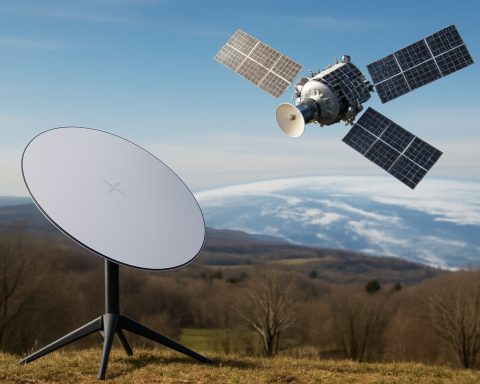- Only Tesla, BYD, Li Auto, and Series Group achieved positive operating margins in 2024 among EV-exclusive manufacturers.
- Despite rising sales, many EV makers struggle with profitability, unlike leaders Tesla and BYD, who benefit from vertical integration.
- Tesla leads in non-Chinese markets with a 7.2% margin in 2023 but faces increasing competition and declining margins.
- BYD is gaining ground on Tesla with a 6.4% margin and could become the most profitable EV-only brand if trends continue.
- Chinese companies, like Zeekr, Xpeng, and Leapmotor, are improving but still face significant margin challenges.
- Nio, Polestar, Rivian, and especially Lucid remain unprofitable, pointing to industry-wide hurdles.
- Success in the EV industry hinges on mastering production value chains and adaptability in a competitive landscape.
An electric storm is brewing over the automotive industry. The race to electrification continues to pulse with energy as carmakers worldwide vie for profitability in an ever-evolving market. Among a sea of hopefuls, only four EV-exclusive manufacturers reached the shores of a positive operating margin in 2024: Tesla, BYD, Li Auto, and the emerging Series Group from China.
As the world accelerates toward electric mobility, sales are climbing at a breakneck pace; however, profitability remains a distant dream for many. Tesla, a veteran in this domain, recorded a 7.2% operating margin last year, with BYD trailing closely behind at 6.4%. But beneath the surface rests a narrative of contrasting trajectories. Tesla, once the unmatched titan in margins, now faces a decline, whereas BYD charges forward and upward. If this momentum holds, BYD is poised to eclipse Tesla as the most profitable EV-only brand.
The secret sauce for these power players lies in their mastery of vertical integration. By handling everything from battery creation to software development in-house, Tesla and BYD have managed to trim costs and fatten their profits. This blueprint is echoed in the operational strategies of Li Auto and Series Group, which adhere to a similar philosophy. The ability to control the supply chain has effectively distinguished the successful innovators from the rest of the field.
China’s burgeoning brands are also gaining ground. Zeekr, the upscale arm of Geely, saw a -8.5% margin in 2024, a marked decrease from previous performance. Meanwhile, Xpeng and Leapmotor have sliced their losses by half over the past year. Yet challenges persist across the sector. Nio, for example, recorded a margin worse than -30%, while even Western darlings like Polestar and Rivian remain mired in red ink despite strides toward breakeven.
In a harrowing display, Lucid’s operating margin lingers at a staggering -374%, an improvement from an even more striking -500% in 2023, yet still an alarming figure. Cushioned by Saudi sovereign wealth investments, Lucid survives, unlike its more vulnerable counterparts.
Against this backdrop, Tesla stands as the lone profitable non-Chinese EV trailblazer. However, escalating competition and fierce price wars threaten its stronghold. The game is changing. The takeaway? In this high-stakes contest, nimbleness, adaptability, and a handle on the entire production value chain will separate the victors from a crowded field of contenders. The world watches as these electric revolutionaries redefine the future of transportation, one innovative leap at a time.
The Shocking Truth Behind EV Market Profitability: What You Need to Know
As the automotive industry powers toward an electrified future, a dynamic landscape of opportunities and challenges emerges. In 2024, the electric vehicle (EV) sector is both growing rapidly and facing profitability hurdles as only a select few manufacturers achieve positive operating margins. Among them are Tesla, BYD, Li Auto, and the emerging Series Group from China.
The Growth of Electric Vehicles and Market Dynamics
The popularization of EVs is in full swing, with sales figures breaking records. However, the pathway to profitability remains elusive for many. This journey is not just about scaling production but also about mastering vertical integration, which has allowed companies like Tesla and BYD to control costs more effectively.
Key Players:
– Tesla: Recorded a 7.2% operating margin, though facing declining margins due to increased competition and pricing pressures.
– BYD: Achieved a 6.4% operating margin, showing upward momentum that threatens to surpass Tesla’s profitability.
– Li Auto and Series Group: Both follow a strategy of in-house development and control over the supply chain, mirroring the successful blueprint of Tesla and BYD.
Vertical Integration: The Secret to Success
The pathway to profitability in the EV industry is increasingly about mastering vertical integration, which involves controlling various stages of production and development, from raw materials to retail.
Why Vertical Integration Matters:
– Cost Control: By minimizing reliance on external suppliers, companies can better manage costs.
– Innovation Speed: Vertical integration allows faster development cycles for new technologies, such as advanced batteries or proprietary software systems.
– Quality Assurance: Maintaining direct oversight over production improves product quality, a critical factor for consumer trust and brand reputation.
Challenges and Emerging Contenders
China’s rising stars and legacy brands strive for better margins amidst a competitive and cost-sensitive market:
– Zeekr, Xpeng, and Leapmotor: Although facing losses, they’ve managed to slice their deficits significantly.
– Nio: Struggles with severe negative margins imply that greater cost-efficiency strategies are needed.
– Polestar and Rivian: Progressing towards breakeven, still grappling with financial sustainability challenges.
Lucid’s Survival Tale:
Despite a daunting -374% operating margin, Lucid stays afloat thanks to substantial financial backing from the Saudi Sovereign Wealth Fund.
Global Trends and Expert Predictions
Moving forward, competition will intensify, driven by:
– Fierce Price Wars: Manufacturers may reduce prices to lure consumers, further compressing margins.
– Policy Impacts: Government regulations and incentives could sharply influence market dynamics and consumer preferences.
– Technological Innovations: Battery technology, charging infrastructure, and autonomous driving systems continue to evolve, presenting both opportunities and disruptions for EV makers.
Recommendations and Quick Tips
For those considering the transition to electric:
– Evaluate Total Cost of Ownership: Consider both the initial purchase price and the long-term savings on fuel and maintenance.
– Stay Informed on Incentives: Government incentives for EV purchases can significantly offset costs.
– Leverage Home Charging Benefits: Installing a home charging station can cut down reliance on public charging networks.
Conclusion
The race to electrification is as much about strategic operational decisions as technological advancements. As the EV landscape evolves, adaptability and a solid grasp of the entire production value chain will be critical in distinguishing future industry leaders from those struggling to catch up.
For more insights into the automotive industry, visit Wall Street Journal.









